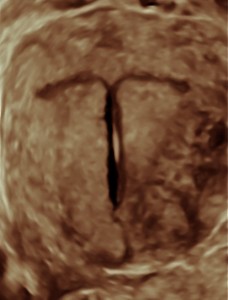 A woman is considered to be menopausal when a year has passed since her last period. Any bleeding after this time is always considered to be potentially abnormal. In fact only a small proportion of women who bleed after the menopause have anything significantly wrong. However as occasionally such bleeding can be a sign of pre-cancerous changes or even cancer, it is important that it is investigated thoroughly.
A woman is considered to be menopausal when a year has passed since her last period. Any bleeding after this time is always considered to be potentially abnormal. In fact only a small proportion of women who bleed after the menopause have anything significantly wrong. However as occasionally such bleeding can be a sign of pre-cancerous changes or even cancer, it is important that it is investigated thoroughly.
Once oestrogen levels drop after the menopause the skin of the vagina becomes thinner, and bleeding may result from this. Problems with the cervix may also be a causative factor. So any assessment must include a cervical smear, which will mean that the skin of the vagina will be examined as part of this procedure.
The role of ultrasound
Bleeding may also come from the lining of the womb or endometrial cavity. Normally the lining is very thin as there is little oestrogen circulating to stimulate it. This lining can be measured using ultrasound, furthermore any other problems in the cavity of the uterus (womb) can also be seen. There are many studies that show that if the lining of the uterus is thin (< 5mm), then it is very unlikely that there is anything significantly wrong.
In this way ultrasound can be used to reduce the need for unnecessary more intrusive investigation. If the endometrial thickness is increased then it is still unlikely that there is anything seriously wrong, but to exclude this a small sample of the womb lining needs to be examined in order to exclude problems (taking a biopsy). This can be carried out as an outpatient in some cases, but may require an examination under a brief general anaesthetic.
Less commonly bleeding may be secondary to ovarian cysts or disease of the fallopian tubes. An ultrasound scan can be used to detect any ovarian or tubal pathology and appropriate action advised.
